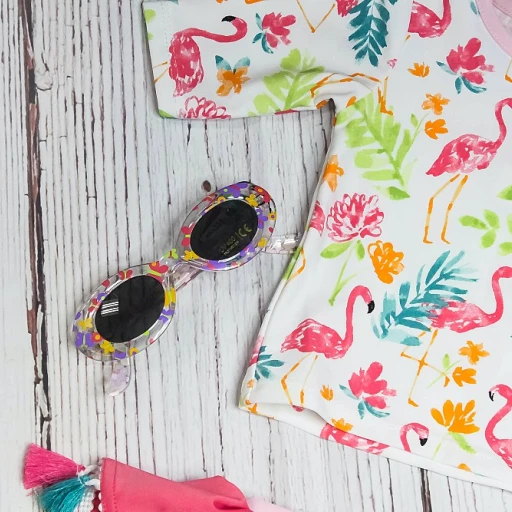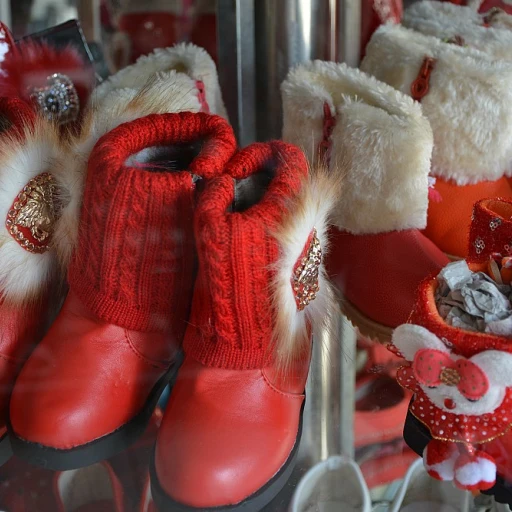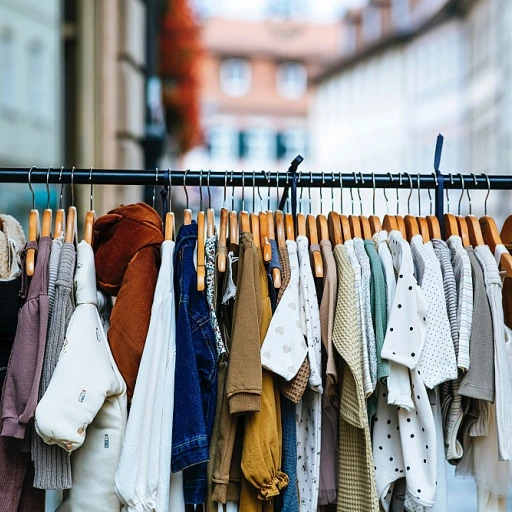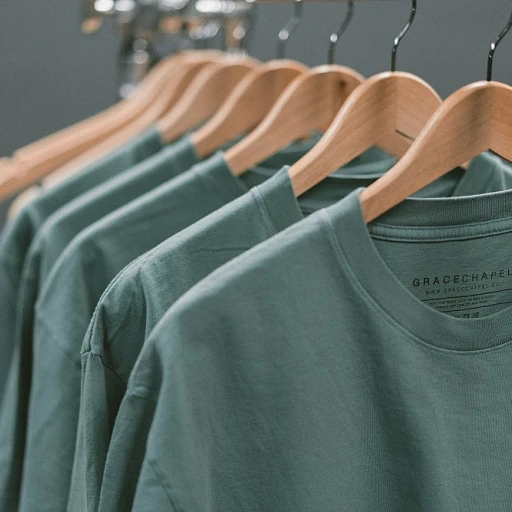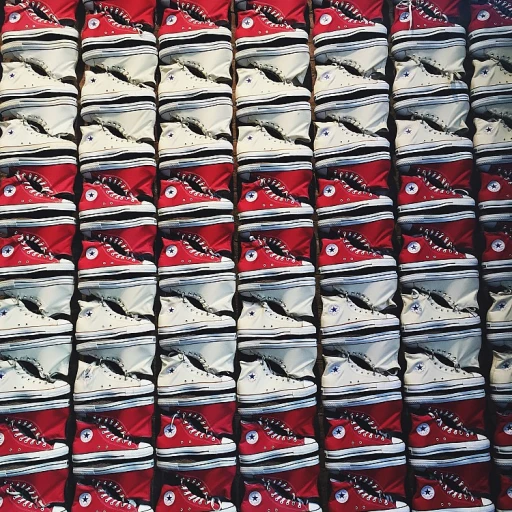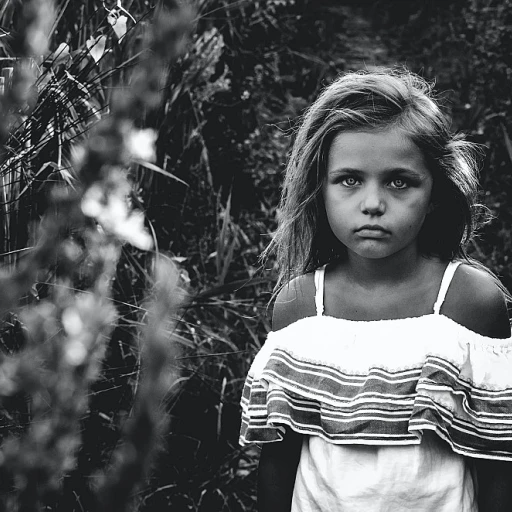
Decoding size 100 in kids' clothing
Stepping into the World of Size 100
When it comes to kids' clothing, understanding the mysterious "size 100" can feel like deciphering a secret code. In reality, size 100 is part of a sizing system often used in Asian countries, particularly in China and Japan. This size generally aligns with the 3-4 years age group, but here's where it gets interesting: the number '100' actually refers to the child's height in centimeters. So a size 100 would typically fit a child who stands 100cm tall.
Now, when we look at the data fact in percentage, sizing can vary between brands. It's not uncommon to see a variation of up to 5% in the fit and dimensions of clothes labeled 'size 100'. For the little ones, this can make or break comfort and wearability. Additionally, the understanding of kids clothes size charts becomes crucial for parents attempting to navigate the sea of options.
Comparing Size 100 Across Different Charts
Turning to size charts, a child falling into size 100 would have an approximate weight of 14-18 kgs (30.9 – 39.7 lbs) and a chest circumference of 56cm (22 inches). The waist measurement flutters around 54cm (21.2 inches), with a slight give or take depending on the clothing brand.
As we factor in different regions, the 'size 100' can vary. For example, in the U.S., this size is closely equivalent to a 3T or 4T, which stands for 'Toddler'. It's essential for parents to be aware that a 'size 100' could fit differently based on the origin of the clothing brand - be it Asia, Europe, or the United States.
Embracing a World of Sizes
Sizing systems around the globe have their quirks. Brands like Hanna Andersson adopt a different approach, labeling clothes based on combined age and size ranges, which can correspond but are not identical to the Asian size 100. It's situations like these where an informed choice becomes the parent's powerful tool for smart shopping.
Understanding kids' clothing sizes is a journey—and size 100 serves as a fascinating waypoint where the realms of toddler and children's clothing intersect. Armed with the right knowledge and a trusty size chart, parents can navigate this journey, ensuring their little ones are stylish, comfortable, and ready to take on their world of adventures.
Size 100 by region: understanding the differences
Regional distinctions in children's clothing sizes
When staring down a rack of adorable outfits, one might ponder why a size 100 varies so much around the globe. In truth, size designations are not just numerical but cultural expressions as well, often reflecting the sizing norms of the country of origin. For instance, a size 100 in Japan is often designed to fit children roughly between 3 and 4 years old, aligning with an average height of about 95 to 105 centimeters.
A glimpse into international clothes sizes
This same size 100, when crossing the seas to Europe, might find a comfortable fit for those a year elder, owing to different stature and growth charts used in creating the clothes size chart. Meanwhile, in the U.S. and Australia, this size could very well be marked with a ‘3T’ (toddler) or ‘4’, complicating matters further for parents used to a different system.
Understanding the size chart maze
Adding to this confusion, international brands like Hanna Andersson, which offer their uniquely Scandinavian spin to sizing, have their own set of rules. They base their sizes on height and weight ranges, demanding a more careful scrutiny when projecting size conversion. This puts the onus on caregivers to thoroughly investigate size charts to ensure a precise fit.
Size labeling intricacies
As retailers often convert sizes to match their domestic market, what's on the label might not match the original sizing intent. For example, a size 100 clothing piece converted for the UK market might show a variation in age, height, and even shoe size compatibility. In such cases, the parent's best tool is a reliable size conversion chart, often found online or provided by the retailers themselves.
Stay vigilant with size
It's beneficial for parents to stay informed with the latest trends and updates in international size conversions, reinforcing the notion that a seasoned buyer is the child's best advocate in the fashion labyrinth. Information is powerful, and a sound understanding of size dynamics is an indomitable asset for any shopping stint involving children's clothes sizes.
Expert insights on international size conversion
Unraveling the mystery behind international size conversion
When it comes to finding the right fit in kids’ clothing, size 100 remains a bit of an enigma for many parents. This size can vary considerably depending on where you are in the world. For instance, a Japanese size 100 is designed to fit children who are around 95-105cm tall. In contrast, the same size in the U.S. is generally tailored for tots weighing up to about 34 pounds. To demystify this, experts in children’s fashion suggest a rule of thumb: dedicate time to understanding the specific size charts provided by each brand or store.
Leading fashion specialist Hanna Andersson, author of ‘The International Size Guide for Children's Apparel’, indicates that discrepancies are often seen across different regions. For example, a size 100 in Europe might align more closely with a size 3 or 4 in the U.S., whereas the UK and Australia might refer to it simply as "toddler size." Andersson's insights help parents navigate this landscape; she underscores the use of detailed size conversion charts, which illustrate the correlation between one country's sizing and another’s.
Several studies, including those conducted by the Global Children’s Fashion Committee, report that age, height, and weight are the three pillars for international size conversions. However, considering variations in body proportions, brands may also incorporate measurements such as chest, waist, and hip dimensions in their sizing guides. A trend observed in recent years is the adoption of more universal sizing systems by certain brands, attempting to streamline the process for global consumers.
Case studies illustrate mixed outcomes, however, due to cultural preferences and body diversity. A fascinating example comes from the Scandinavian brand Hanna Andersson, known for using a more consistent metric-based sizing system. Their approach considers both height and weight equally, which has been appreciated by customers seeking more predictable fits for children’s clothes.
Experts caution against relying solely on age-based sizing, as a size 100 garment fits children aged 3-4 years in one part of the globe, but those who are 2-3 years old elsewhere. This is where free shipping on orders becomes a game-changer for international customers, the inclusion of full-body measurements, not just lbs and months, can make all the difference in selecting a well-fitting garment.
Controversy arises from inconsistent sizing standards across the industry, which some studies have shown can lead to frustration and returns, impacting both consumer satisfaction and the environment. The importance of precise and detailed explanations from brands on their clothing size charts has never been more critical, particularly for regions where multiple sizing standards coexist, like Europe.
In conclusion, as Andersson eloquently states, "The art of children's clothing size conversion is rooted in attention to a child's unique body shape, with an international perspective." This quote encapsulates the essence of sizing challenges faced by parents and highlights the need for continued research and adaptation to ensure correct fits in our globalized market of children's fashion.
How to measure your child for the best clothing fit
Expert advice on taking accurate measurements
Finding clothes that fit perfectly can sometimes feel like a treasure hunt, especially when it comes to dressing our little ones. Before we jump into the sea of size 100 options, let's anchor down the basics of measuring. Kids grow at such a rapid pace that it can feel like they need a new wardrobe every few months, making accurate measurements crucial.
So, how do you ensure you're buying the right size? Firstly, you'll need a soft measuring tape. Experts, like children's clothing designer Hanna Andersson, suggest taking four key measurements: chest, waist, hip, and inseam. Hanna's comprehensive book on kids' fashion outlines each step.
An example to illustrate: suppose your child's chest measures 22 inches. According to most size charts, this would align with size 100, assuming the other measurements fall within a similar range. But remember, sizes can vary slightly by brand, so always check the specific size chart provided.
Studies and recent trends show that parents often buy bigger sizes to account for growth, but doing so might compromise the fit and comfort. A report by the Global Children's Wear Market has identified a trend where parents prioritize comfort and fit over size labels, ensuring their child can move freely without restriction.
Interpreting the numbers
When it comes to age, size 100 generally corresponds to children 3 to 4 years old. However, every child is different, and so are their growth patterns. A study on pediatric growth patterns indicates that height and weight are more reliable indicators than age when it comes to clothing sizes. Moreover, size 100 can fit children up to 39.4 inches tall and weighing around 33 pounds, as per standardized international size conversion charts.
What's interesting is the variation within the size 100 standard itself. In some brands, a size 100 could mean clothes for kids who are 36 months old, while others might label it as suitable for those who are a little older, about 3-4 years. Therefore, consulting a size conversion chart, like the ones available at Hanna Andersson's or other children's clothing websites, becomes imperative.
Real-life applications from seasoned parents
Case studies have shown that parents often rely on their own experiences over formal guidelines. Take Sarah, a mother of two from Australia, who found that measuring her child's waist and comparing it to the brand's size chart led to a much better fit for her active toddler, reducing the need for frequent shopping trips.
Controversies may arise when sizing does not align with the global standard. Some experts argue that size 100 should have a more universal definition to avoid confusion. Yet, it's essential to understand the context. Clothing may be designed with regional body types and styles in mind, especially when comparing U.S. and European brands.
Insider tip: Always measure your child while they're standing straight and relaxed, and measure over their undergarments for the most accurate results. And if you're between sizes, it's advisable to choose the larger size to accommodate your child's growth.
In summary, while size 100 is a common label in kids' clothing, the dimensions it represents can vary. Just as every child is unique, so too is their sizing. Therefore, taking accurate measurements and comparing them against the specific brand's size chart will always be the best practice for finding that perfect fit.
The growth variable: accounting for kids' rapid changes
Keeping up with growth spurts
Any parent will tell you, kids grow at astonishing rates. It's this growth variable that often confounds even the most seasoned parent when it comes to buying clothing that lasts. Dr. Emily Park, a revered pediatrician and author of The Growing Child: Clothing Considerations, states that "children can go through a rapid growth spurt, with an average toddler growing as much as 8 to 10 centimeters in height each year." This kind of growth can turn a perfectly fitting wardrobe into a selection of crop tops and ankle swingers overnight!
Some figures to consider: by some estimates, children in the 2-4 year age bracket can move up a clothing size every 6 months. Understanding this can help you anticipate when size 100 might be appropriate. If you've read about how to measure your child for the best clothing fit, you'll know the importance of frequent updates to your child's size chart to keep pace with their growth.
Dynamic fitting strategies
Savvy parents have developed practical strategies to ensure their kids are not only well-dressed but are also wearing clothes that can adapt to growth. For example, adjustable waistbands and extendable hemlines have become a staple in children's clothing designs. Alongside this, parents often share clothes between siblings or invest in unisex pieces that can be handed down regardless of gender.
Studies on clothing longevity, such as those conducted by the Sustainable Apparel Coalition, show that garments with adjustable features are retained in a child's wardrobe for longer, reducing the need for frequent replacements due to growth. This is not only economically sensible but also aligns with the broader trend towards sustainable living.
What experts advise
Leading child growth expert Dr. Martin Goss advises that "parents consider purchasing clothes a size up to accommodate unexpected growth spurts." While this approach can save time and money, it's a delicate balance — clothes that are too large can be uncomfortable and potentially unsafe. It's essential to strike the right fit, equating to a mix of present-day snugness with a little room for expansion.
Dr. Park echoes this sentiment in her latest report, emphasizing the importance of "clothes that grow with your child — garments featuring cuffs that can be rolled up or down, pants that can be turned into shorts, and adjustable straps on dresses." Such clothing items provide flexibility and can be flattering even when a child is between sizes.
Real-world applications
In terms of real-life experiences, chat forums for parents are abuzz with stories of triumph and misadventure in the quest for the perfect size. One parent reported that opting for a 'grow with me' pant proved cost-effective as it transitioned from full-length to capris before ultimately serving as shorts for their child over a span of many months.
Conversely, a lack of awareness of such options can lead to frustration. An emergent controversy in the children's clothing industry concerns the lack of consistent sizing across brands, often leading to misguided purchases. With size 100 in children's clothes encompassing such a broad range, awareness and education on growth patterns could help mitigate this issue, promoting informed decision-making when shopping for kids' clothing.
Illustrative case studies: parents finding the perfect size
Real-life experiences with finding size 100
When it comes to dressing our youngsters, there's no one-size-fits-all, and parents often find themselves playing detective to figure out which size translates to a comfortable fit for their rapidly growing kiddos. A common conundrum is deciphering what size 100 means across different brands and regions. As each child is unique, clothing that advertises itself as 'size 100' can have a very different fit from one label to another.
Let's explore a few narratives from parents who've navigated these waters and emerged with strategies that work. These stories not only highlight the challenge of finding that "just right" garment but also the joy of discovering solutions.
Case study: Emily's Eureka moment
For Emily, mom of a delightfully active toddler, the quest for the perfect pair of overalls became a mix of trial and error and success. After realizing that her son's size 100 garments often resulted in unexpected sizes and fits, she began to dig into size charts. Emily compared the height, weight, and chest measurements listed in the brand's size charts with her own little one's measurements. She discovered that a size 100 was perfect in terms of height and waist measurements, but the clothes were often too snug around the chest for her son's age.
Insights from a Dad named Alex
Alex, father to twin girls, found himself in a similar situation but tackled it using a different approach. After a few disappointing online shopping experiences, he started looking for brands that offered international size conversion charts. He kept height, weight, and age at the forefront of his decision-making process. By keeping age height weight charts handy and cross-referencing with international size conversion charts, he discovered size 100 varied greatly between the U.S., Europe, and Asia. This led to a better shopping experience and clothes that actually fit his daughters.
Learning from Oliver's outdoor adventure
Then there's Oliver, a father with a passion for the great outdoors, who looked for size 100 clothing that could keep up with his son's adventurous spirit. He quickly learned to pay attention to not only size labels but also the material and cut of the clothes, which impacts how they wear over time. A size 100 jacket with extra room for layers became a staple for their camping trips, ensuring his son stayed warm, comfortable, and able to move freely.
These stories highlight a common trend among parents: when it comes to finding that perfectly sized outfit, detailed research and a dash of patience are essential. Paying close attention to a clothes size chart and considering weight, chest, waist, and hip measurements rather than relying solely on age or a single size number, can dramatically improve the chances of a successful fit.
Moreover, what these anecdotes convey is the importance of expectation management and adaptability. Children grow at unpredictable rates, and a size 100 that fits today might not fit a few months down the line. The key lies in understanding the sizing, fit, and growth variables that come into play when selecting kids' clothing.
Online shopping for size 100 clothes: tips and tricks
Smart Shopping Online for Size 100 Kids' Clothing
When it comes to shopping for size 100 kids' clothes online, parents have a plethora of options right at their fingertips. There are steps to ensure the clothing not only fits but also meets your child's needs. With the ease of online shopping, you can often snag clothes for your munchkin without even leaving your home. Here's how to do it right.
Navigating Size and Fit from a Screen
Online shopping is a bit like treasure hunting, isn't it? You're scrolling through endless options looking for that perfect piece. But unlike the in-store experience, you can't have your kiddo try on clothes through the screen. That's where accurate size charts and detailed product descriptions step in. Before adding size 100 garments to your cart, check the shop's size chart against your child's current measurements. Remember, some stores list size 100 with an age range, like 3 to 4 years, but it's better to go by your child's specific measurements to ensure a snuggly fit.
Filter Your Search
Save time by using filters. Select the 'size 100' or an equivalent regional size then narrow it down further by gender, season, or even color preferences. Recognition of the rapid pace of kids' growth spurts, filters can also help identify adjustable waistbands or extendable hems that can grow with your child.
Read Customer Reviews
Peer insights can be golden when shopping online. Look for feedback about how the sizes fit, the durability of the fabric, and whether the color stays true after washes. Reviews can also shed light on whether a particular brand's size 100 runs large or small, helping you avoid a sizing mishap.
Returning with Ease
It's essential to understand the return policy when buying size 100 clothes online. Will the store offer a full refund if the clothes don't fit? Can you exchange for a different size without extra charges? Being armed with this information before purchasing can save you from a potential post-purchase headache.
Leverage Free Shipping Offers
Keep an eye out for free shipping offers, which can sometimes be based on a minimum spending amount. Joining a store's mailing list or loyalty program can sometimes score you exclusive shipping deals, perfect when stocking up on size 100 clothing basics.
Shop Sales and Clearance Sections
Finally, don't forget to check out the sales and clearance sections of online stores. You might find high-quality size 100 clothes at a fraction of the cost, maximizing your budget and your child's wardrobe at the same time.
With these tips, you're set to navigate the online shopping world for size 100 kids' clothing. Even though there's a bit of prep work involved, finding that perfect little dress or those oh-so-cozy pajamas from the comfort of your couch can be an incredibly satisfying and convenient way to shop.
Sustainable fashion choices in size 100
As parents navigate the world of kids' clothing, size 100 emerges as a popular label. But there's a deeper layer to this number beyond mere fit—it's about making choices that don't just snugly dress our children but also positively impact the environment. Sustainable fashion in children's wear is not just a fleeting trend; it's a growing responsibility that consumers are taking seriously. So, when you're picking out those adorable outfits in size 100, considering sustainable options can make a big difference.
Understanding Sustainable Materials
Opting for clothes made from organic cotton, bamboo, or recycled fabrics has a smaller ecological footprint. Studies suggest organic fabrics use less water and are free from harmful pesticides, making them safer for the planet and your child. Renowned children's clothing brands, such as Hanna Andersson, have taken significant strides in using organic materials, ensuring their size 100 offerings are not just stylish but also kinder to Mother Earth.
Embracing Secondhand and Upcycling
Parents are increasingly embracing the idea of a "circular wardrobe" for their kids, which includes buying secondhand or upcycling existing clothes. In a market analysis, a substantial percentage of parents were found to consider pre-owned items to reduce waste. This ties in closely with the idea of 'outgrowing instead of throwing out,' where clothes are circulated among families and friends, keeping the garments in use for longer. Children's clothing boutiques and online marketplaces have seen a surge in the sale and purchase of secondhand size 100 clothing items.
Smart Shopping and Care Habits
To extend the lifespan of size 100 garments, experts advocate for smarter shopping and garment care techniques. Investing in high-quality, versatile pieces that can withstand the rough and tumble of playtime is cost-effective in the long run. Moreover, implementing proper care—such as lower temperature washes and air-drying—reduces the clothes' environmental toll and keeps them in rotation longer.
Size 100 and the Future
The conversation surrounding sustainable size 100 clothing isn't just a niche in children's fashion magazines; it's a critical dialogue being held globally. With growing awareness, parents are not shying away from these eco-conscious decisions. Trends data indicates an upward trajectory in the demand for sustainable children's clothing, reflecting a collective shift toward eco-friendly parenting practices.
Eco-Friendly Brands Making Their Mark
In the quest for practical yet sustainable choices, brands that specialize in size 100 clothing are emerging as leaders. Their use of sustainably sourced materials, fair labor practices, and transparent supply chains are shaping future industry standards. These brands are not only offering a variety of size 100 clothes but also pioneering innovations in fabric recycling and eco-friendly production processes. By supporting these companies, parents can practice more mindful shopping that aligns with their values.
Children outgrow clothes at a breathless pace, but that doesn't mean their wardrobes can't evolve sustainably. Whether it's through choosing brands that prioritize the planet or by incorporating pre-loved items into their closets, making greener choices for size 100 clothing is becoming an integral part of modern parenting—and with each eco-friendly piece, the fashion industry inches closer to a more sustainable future.

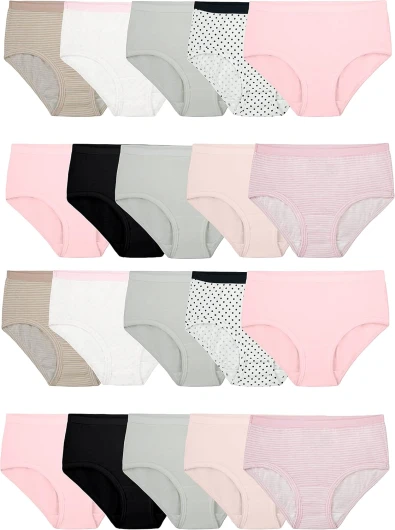
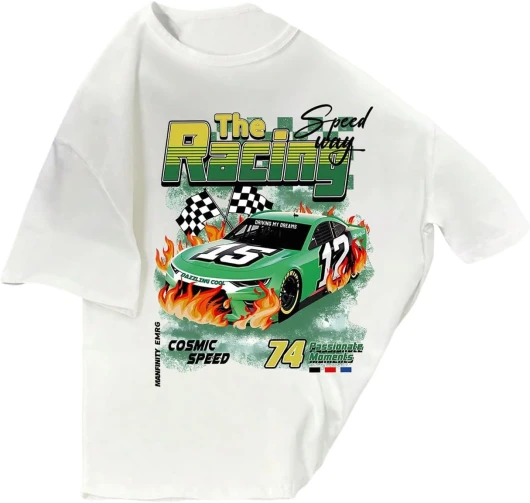
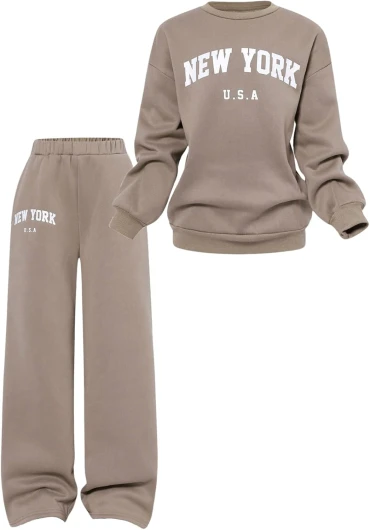
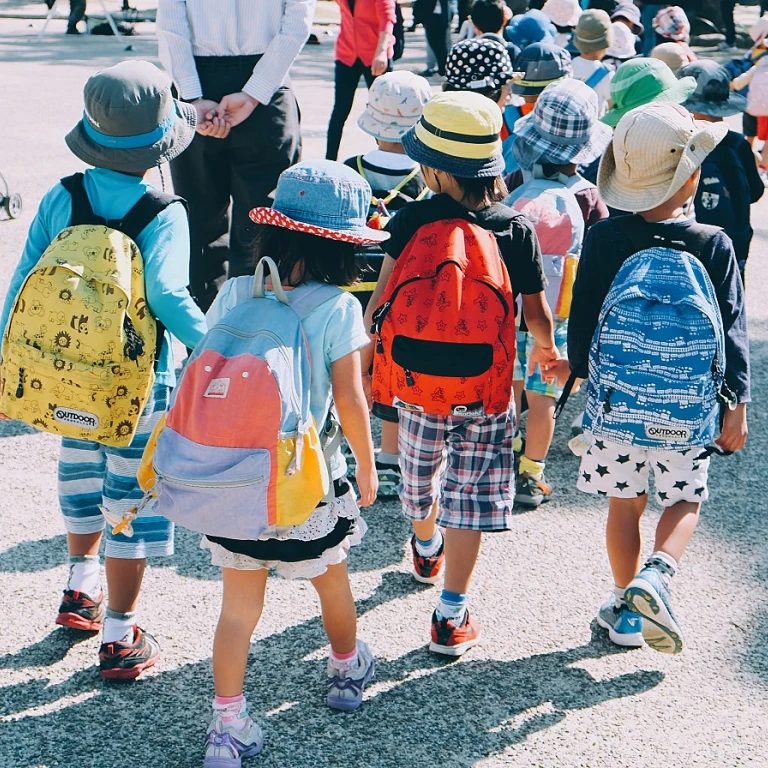
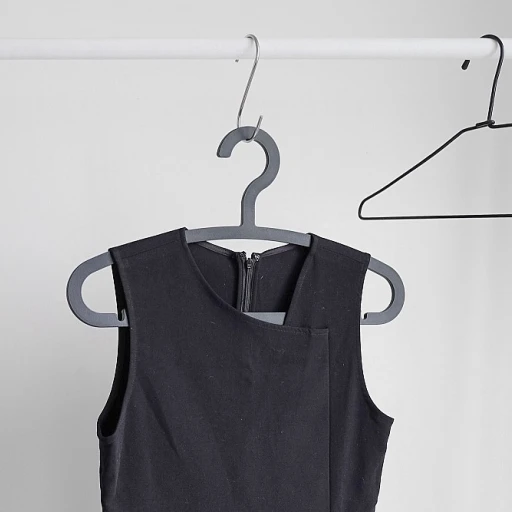
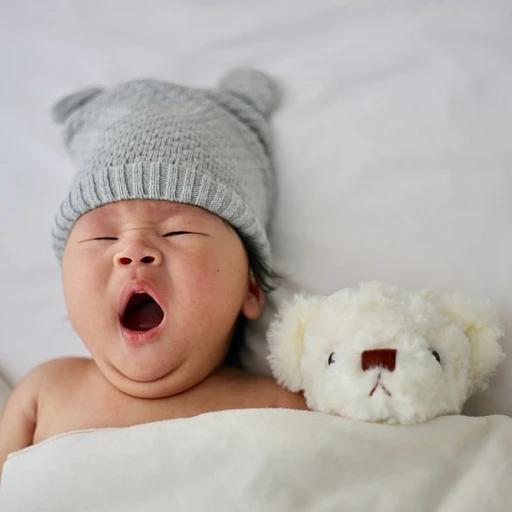

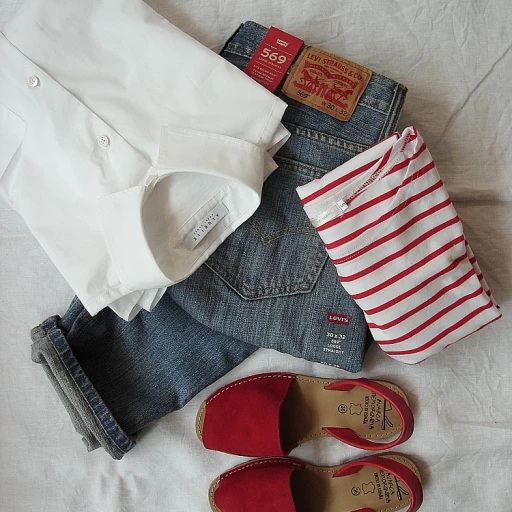
-large-teaser.webp)
